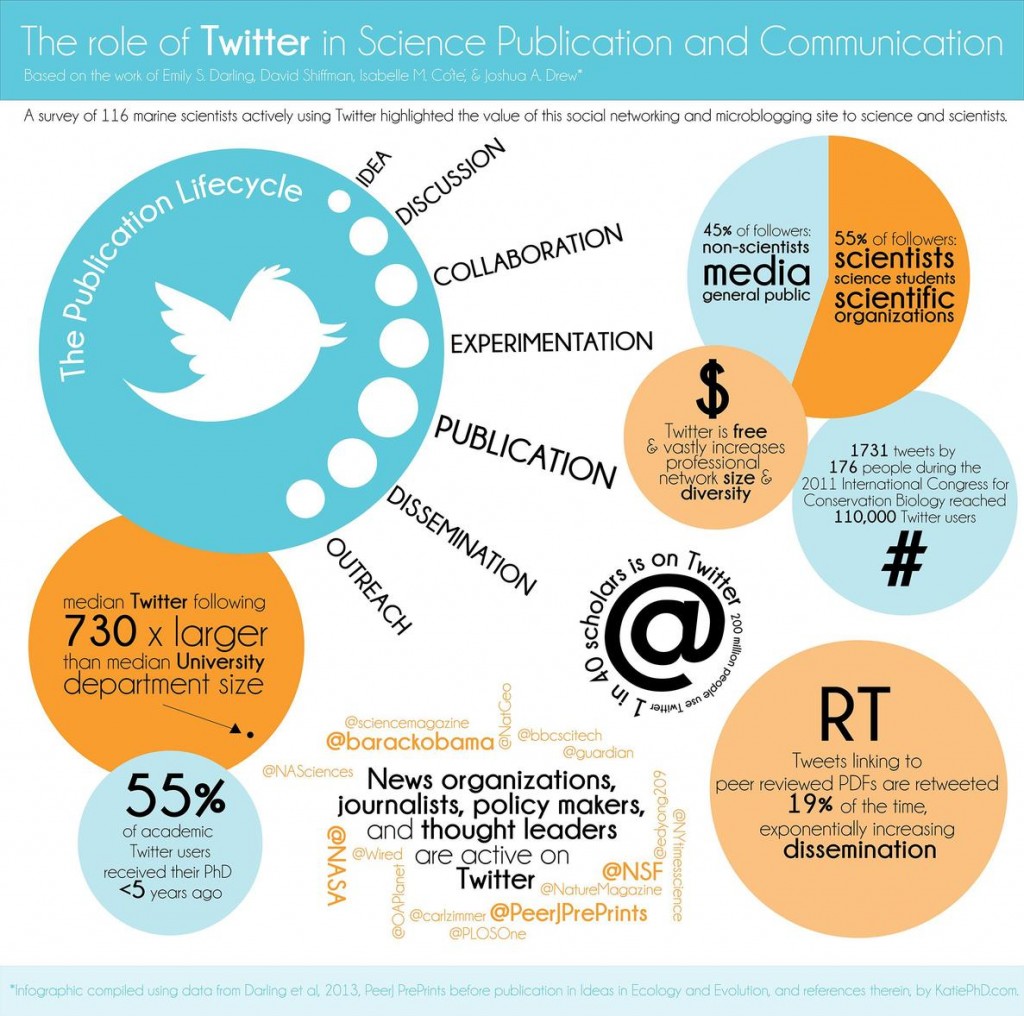Our new lab post doc @emilysdarling has a great piece in The Conversation about the use of twitter in the life and work of a scientist:
Social media is no longer a new thing. But to scientists it still might be. There are few who are starting to take advantage of social media for professional reasons. What can other scientists learn from such use? What are the benefits and limitations?
To investigate this, three colleagues and I looked at some concrete examples. Among the commonly used social media, the 140-character microblogging service Twitter has been popular. We decided to survey 116 marine scientists that actively tweet to understand the role Twitter plays in the lifetime of a scientific idea – from birth to dissemination.
Here is what we found: Twitter can move conversations from the university lounge to a much larger network of scientists on social media. For example, a scientist’s Twitter following can act as a virtual department to spark and share new ideas. As shown in the graphic below, 55% of the Twitter followers of those surveyed consisted of scientists. Tweeting new ideas to other scientists can push ahead “open science in real time”
Scientists can also use Twitter to communicate far beyond the ivory tower of academia. For example, the remaining 45% of the scientists’ followers included people from the media, non-governmental organisations and the general public. Tweeting links to new scientific papers can reach journalists who might cover the story. In fact, using social media to build a network of media followers may be a new public relations strategy for scientists.
Read the rest here

Leave a Reply